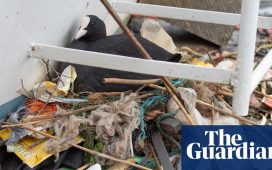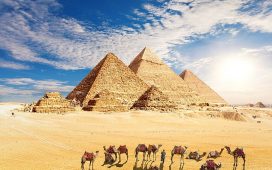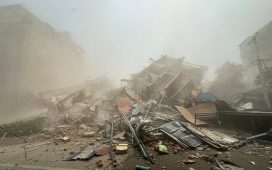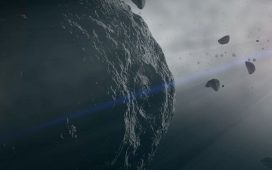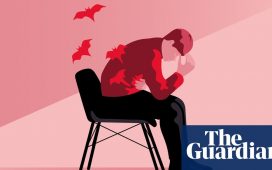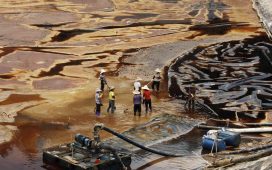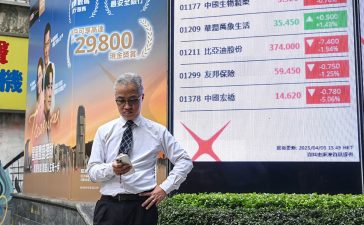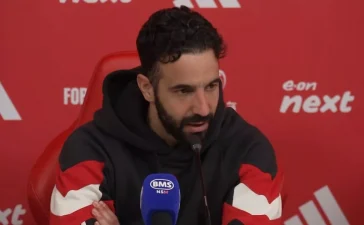Two astronauts stranded in space for 278 days have revealed how close they came to being lost in space. Butch Wilmore and Sunita Williams ended up spending 286 days in space — 278 days more than planned – when they blasted off on Boeing’s first astronaut flight on June 5 last year.
SpaceX carried the duo home at the end of last month after more than nine months in space after a bungled test flight to the International Space Station (ISS). On their journey to the ISS, the veteran astronauts and retired Navy captains had to intervene in order for the Starliner capsule to reach the space station, as thrusters failed and helium leaked.
The astronauts have now revealed harrowing details of how their capsule was beset by issues from the beginning, including a near-catastrophe when they approached the ISS. Mr Wilmore told Arstechnica the capsule was within a few hundred metres of the space station when a second thruster failed, which under the flight rules meant the pair should have returned to Earth.
He described taking manual control before a third thruster failed, then a fourth, meaning the astronauts couldn’t move forwards. It meant Mr Wilmore was forced to contemplate whether it was best to continue to approach the ISS or fly back to Earth.
He said: “There was a lot of unsaid communication, like, ‘Hey, this is a very precarious situation we’re in’. I think both of us overwhelmingly felt like it would be really nice to dock to that space station that’s right in front of us.
“We knew that they [Mission Control] were working really hard to be able to keep communication with us and then be able to send commands. We were both thinking, what if we lose communication with the ground?”
Mr Wilmore explained how he didn’t know if they would be able to return to Earth and that the capsule wasn’t level with the space station, but below it.
He explained: “So we’re not exactly level with the station, but below it. If you’re below the station, you’re moving faster. That’s orbital mechanics. It’s going to make you move away from the station.
“So I’m doing all of this in my mind. I don’t know what control I have. What if I lose another thruster? What if we lose comm? What am I going to do?”
Ms Williams said both were getting “a bit nervous” because the capsule had started to deviate slightly as it approached the station and their vessel’s system would have aborted docking with the ISS if it sensed the capsule was outside certain limits.
Experts in Houston then decided to reboot the failed thrusters, which meant Mr Wilmore had to relinquish control of the vessel. He said: “That was not easy to do.”
Luckily, two of the four thrusters came back online after flight controllers overrode Starliner’s computer. But it was a bitter sweet moment because then another thruster was lost.
Mr Wilmore said: “I attribute to the providence of the Lord getting those two jets back before that fifth one failed.” He admitted feeling apprehensive when mission control asked him to give up control of the capsule on its final approach to the space station.
His concern was that the vessel’s system may not go back to manual mode after it went into automatic. He said: “All this is going through my mind in real time. And I gave it back. And of course, we docked.”
Ms Williams said: “I was super happy. If you remember from the video, when we came into the space station, I did this little happy dance. One, of course, just because I love being in space and am happy to be on the space station and [with] great friends up there. Two, just really happy that Starliner docked to the space station.
“My feeling at that point in time was like, ‘Oh, phew, let’s just take a breather and try to understand what happened’.”
In their first news conference since coming home, the pair said they were taken aback by all the interest and insisted they were only doing their job and putting the mission ahead of themselves and even their families.
Mr Wilmore didn’t shy away from accepting some of the blame for Boeing’s bungled test flight. He said: “I’ll start and point the finger and I’ll blame me. I could have asked some questions and the answers to those questions could have turned the tide. All the way up and down the chain. We all are responsible. We all own this.”
Despite what happened, both astronauts said they would still strap into Starliner again. Mr Wilmore said: “Because we’re going to rectify all the issues that we encountered. We’re going to fix them. We’re going to make it work.” He added he would go back “in a heartbeat”.
Ms Williams said Starliner has “a lot of capability” and she wants to see it succeed, adding: “We’re all in.”

